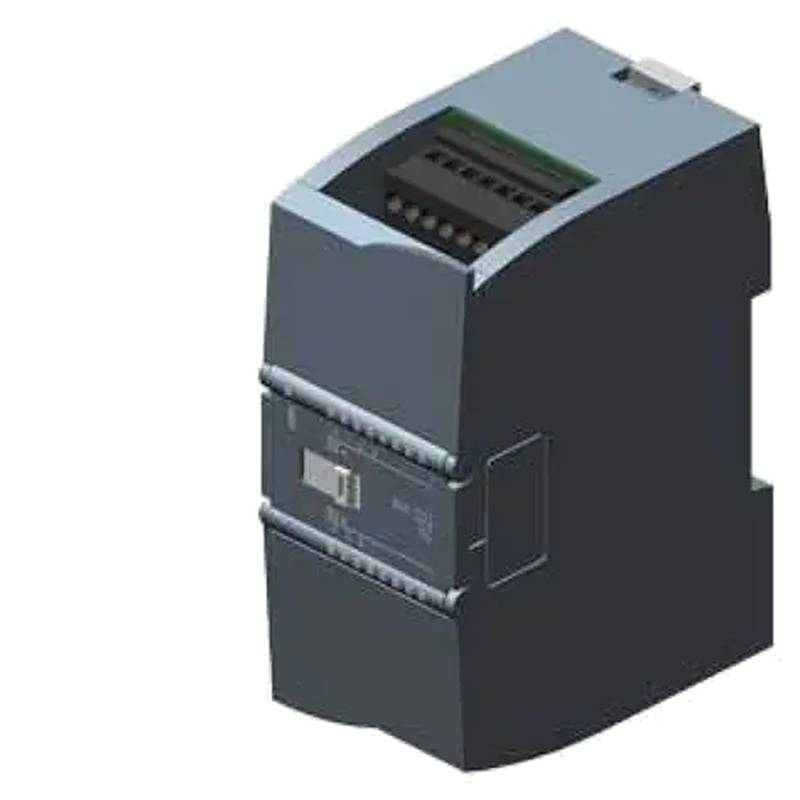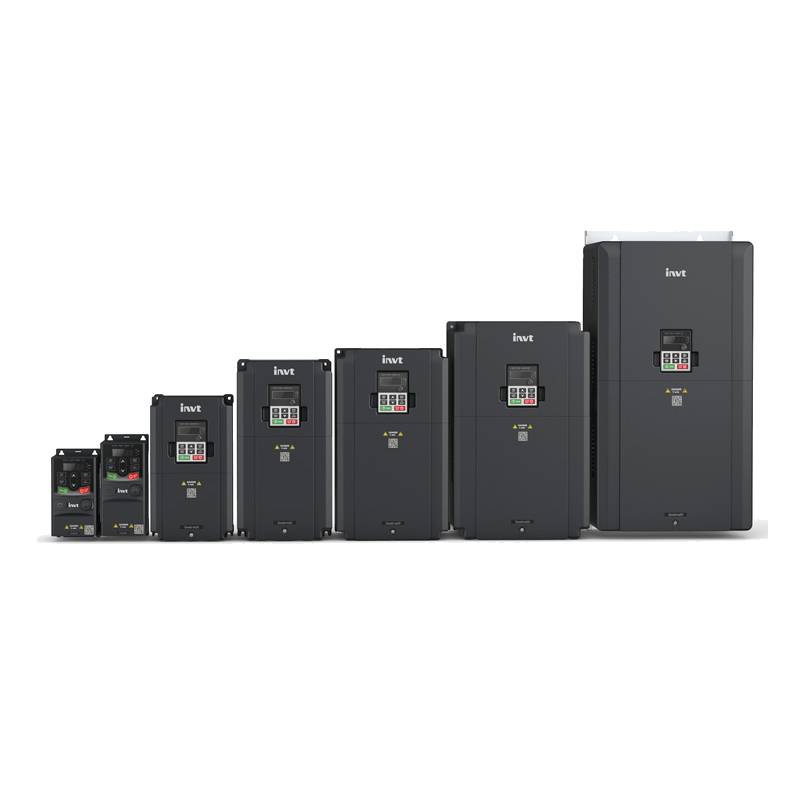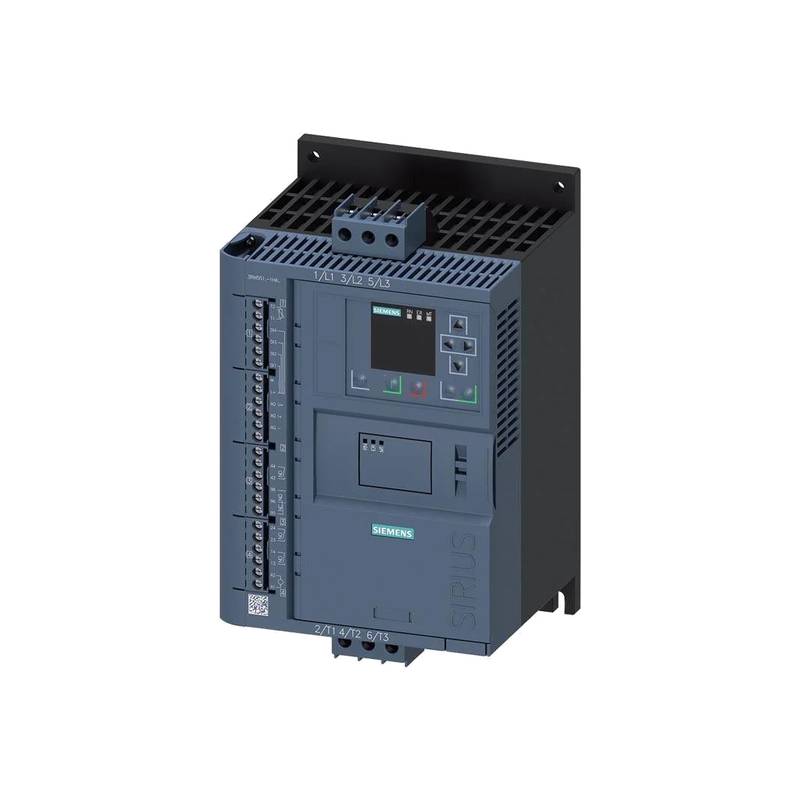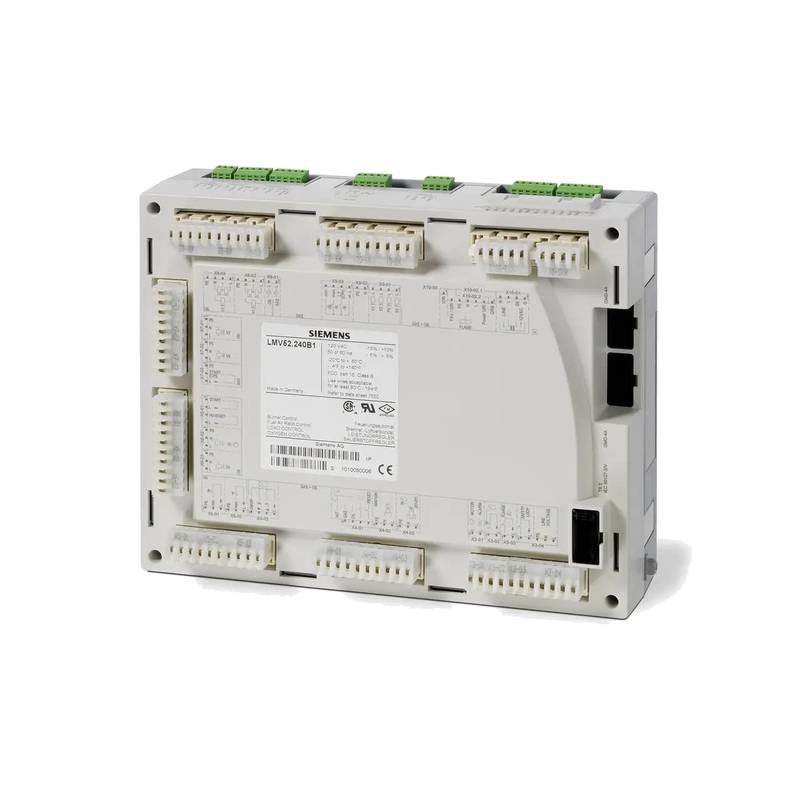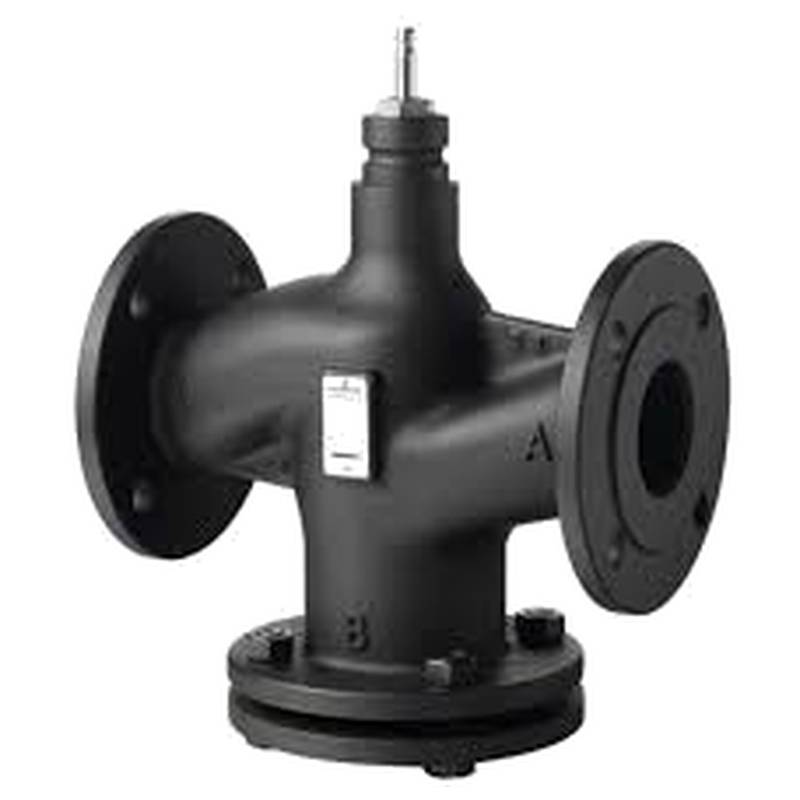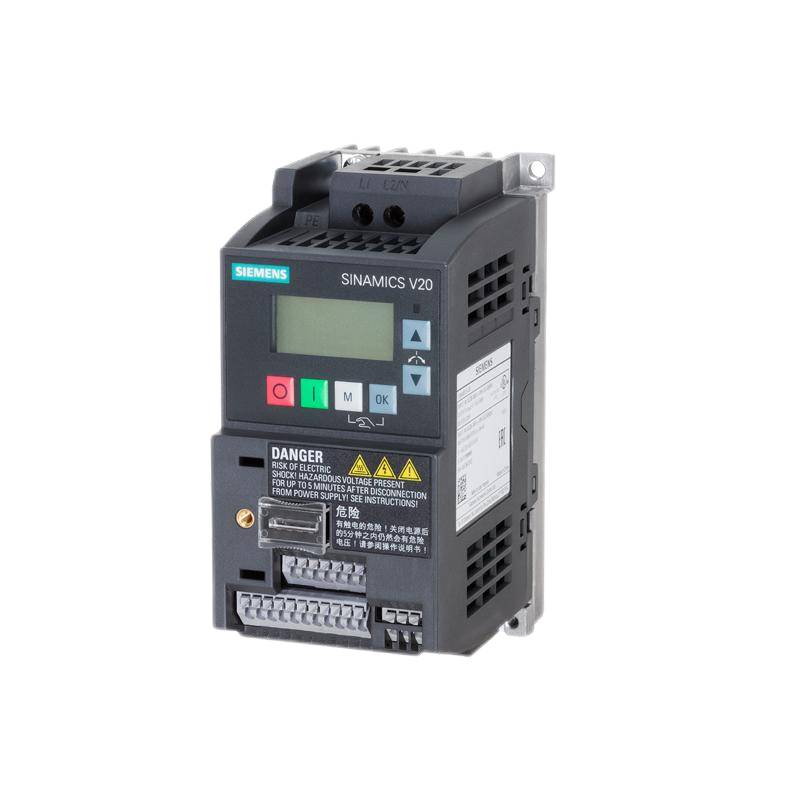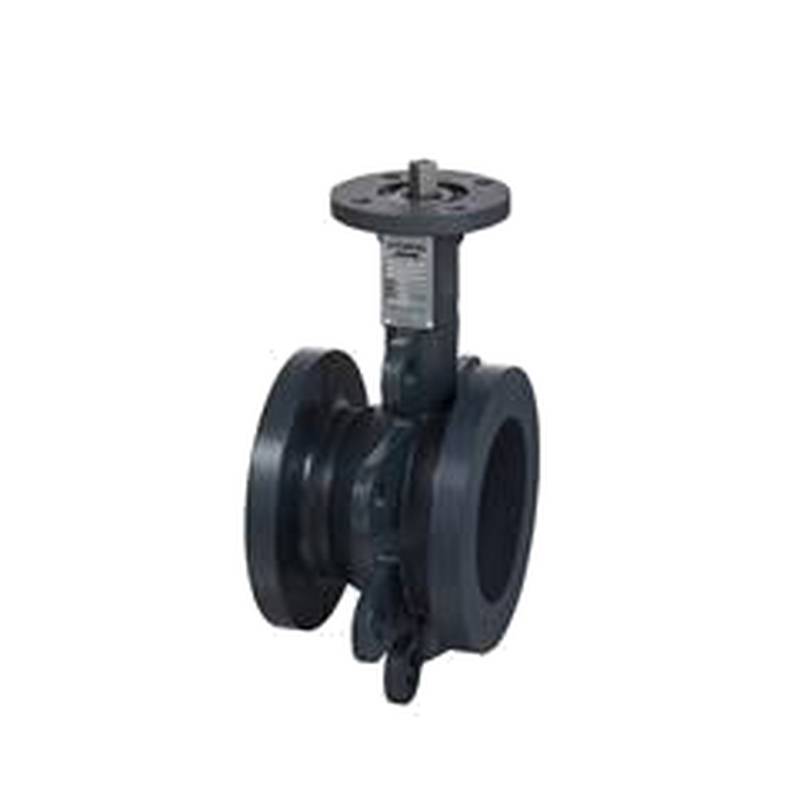
The Siemens 6ES7222-1BF32-0XB0 is an 8-point standard transistor output expansion module designed for the SIMATIC S7-1200 PLC system. This module offers rapid switching capabilities with a 24V DC output voltage and a current rating of 0.5A per channel, ideal for controlling actuators and other I/O devices in automation applications. Its compact design and seamless integration within the S7-1200 family make it a cost-effective and efficient solution for expanding digital output capacity in various industrial sectors.
Product Specifications
| Feature | Specification |
| :----------------------- | :------------------------------------------ |
| Product Type | Digital Output Expansion Module |
| Siemens Order Number | 6ES7222-1BF32-0XB0 |
| Compatibility | SIMATIC S7-1200 PLC |
| Number of Outputs | 8 |
| Output Type | Transistor, Sinking (PNP) |
| Output Voltage | 24V DC |
| Output Current (per channel) | 0.5 A |
| Total Current (module) | 2 A |
| Switching Frequency | 10 kHz |
| Isolation | Yes, between groups and backplane |
| Dimensions (W x H x D) | 45 mm x 100 mm x 75 mm |
| Operating Temperature | -20°C to +60°C |
| Protection Rating | IP20 |
Core Features & Market Positioning
The Siemens 6ES7222-1BF32-0XB0 distinguishes itself through its reliable transistor output design, offering fast switching speeds essential for high-performance automation tasks. As a standard module within the S7-1200 ecosystem, it benefits from Siemens' robust engineering and widespread industry acceptance, positioning it as a dependable choice for small to medium-scale automation projects. Its sinking output configuration is particularly advantageous for direct connection to many industrial sensors and solenoids, simplifying wiring and reducing the need for additional interface components. This focus on efficiency and straightforward integration makes it highly competitive against other PLC expansion options.
Key Application Scenarios
This expansion module finds extensive use in machine building, particularly for controlling discrete outputs such as solenoid valves, indicator lights, and small motor contactors. It is a perfect fit for applications requiring precise timing and rapid signal response, like packaging machinery, conveyor systems, and assembly lines. The 24V DC transistor output is well-suited for process automation where controlling various actuators in sequence is critical. Furthermore, its integration with the S7-1200 platform makes it ideal for building automation systems, HVAC control, and any scenario demanding localized digital output expansion.
Practical System Integration Guidance
Integrating the Siemens 6ES7222-1BF32-0XB0 into an S7-1200 system is a streamlined process. The module snaps directly onto the DIN rail alongside the CPU and other I/O modules. Wiring involves connecting the 24V DC power supply to the module's power terminals and then connecting the individual output channels to the load devices. For programming, users can assign the module's outputs within the TIA Portal software, utilizing standard digital output instructions. Ensure proper grounding and consider the total current draw of all connected loads to avoid overloading the module's capacity.
Operation and Risk Mitigation
Operating the 6ES7222-1BF32-0XB0 requires adherence to standard industrial safety practices. Users must ensure the module is correctly powered within its specified voltage range (24V DC) and that individual channel loads do not exceed the 0.5A limit. Overcurrent protection, either through internal module limitations or external fusing, is recommended to prevent damage. When troubleshooting, check wiring integrity and verify the correct output state in the PLC program. While this module does not typically report specific fault codes, general PLC diagnostics within TIA Portal can help identify issues related to output operation, such as short circuits or open loads.
Scalability & Long-Term Value
The Siemens 6ES7222-1BF32-0XB0 offers excellent scalability due to its compatibility with the modular S7-1200 architecture. Additional digital or analog I/O modules can be added as system requirements grow, without needing to replace the entire PLC. Its integration into the TIA Portal environment ensures future compatibility with advanced functionalities, including communication protocols for IIoT integration, data logging, and remote monitoring. Investing in this module provides a robust foundation for current automation needs while facilitating straightforward upgrades and expansions for long-term operational value.
Frequently Asked Questions
What is the maximum current rating for each output on the Siemens 6ES7222-1BF32-0XB0?
Each individual transistor output on the 6ES7222-1BF32-0XB0 module is rated for a maximum continuous current of 0.5 Amperes. This specification is crucial for selecting appropriate loads and ensuring the module operates within its design limits. It allows for direct control of many standard industrial devices.
Exceeding this 0.5A per channel limit can lead to module overheating, premature failure, or damage to the connected equipment. Always verify the current consumption of your solenoids, relays, or indicator lights before connecting them. Consider that inductive loads may have higher inrush currents.
For applications requiring higher current, you may need to use intermediate relays or select a different Siemens output module with a higher per-channel rating. Proper load calculation is key to reliable operation.
How do I wire the Siemens 6ES7222-1BF32-0XB0 module to my actuators?
To wire the 6ES7222-1BF32-0XB0, connect the 24V DC positive (+) supply to the designated power input terminals of the module. Then, connect the common return terminal of the module to the negative (-) of your 24V DC power supply. Each of the eight output channels (Q0.0 to Q0.7) will connect to one side of your actuator (e.g., a solenoid valve coil).
The other side of each actuator must then be connected to the negative (-) of the 24V DC power supply, completing the circuit through the transistor output. This is a sinking output configuration, meaning the transistor switches the connection to the negative rail. Ensure all connections are secure and that the correct voltage is supplied.
Always refer to the module's specific wiring diagram in the Siemens documentation for precise terminal assignments. Double-check polarity, especially for the 24V DC supply, to prevent damage to the module or connected devices.
What are the primary advantages of using a transistor output module like the 6ES7222-1BF32-0XB0?
Transistor outputs, such as those on the 6ES7222-1BF32-0XB0, offer very fast switching speeds, enabling them to control applications requiring rapid signal response or high-frequency operations. They are solid-state devices with no mechanical moving parts, leading to a significantly longer operational lifespan and increased reliability compared to relay outputs.
These modules are also energy-efficient, consuming less power than relay outputs. They generate less electrical noise, which can be beneficial in sensitive control environments. The sinking transistor output configuration often simplifies wiring for directly driving low-power DC devices like LEDs or small solenoids.
The lack of physical contacts means no arcing occurs during switching, making transistor outputs safer in potentially explosive atmospheres (though the module itself must be rated for such environments) and reducing maintenance requirements. Their ability to switch quickly is paramount for precise motion control and high-speed processing.
Can the Siemens 6ES7222-1BF32-0XB0 be used with AC loads?
No, the Siemens 6ES7222-1BF32-0XB0 is specifically designed for DC outputs only. The transistor outputs are rated for a 24V DC voltage and cannot be used to switch AC loads directly.
Attempting to connect an AC load to this module will likely result in immediate damage to the module and could pose a safety hazard. The semiconductor (transistor) within the module is not designed to handle the alternating current characteristics and voltage peaks associated with AC power.
For controlling AC loads, you must use a relay output module or an external relay controlled by a DC output module from the Siemens S7-1200 range. Always consult the product datasheet to confirm the type of output (DC or AC) and its voltage/current ratings.
What is the maximum total current that the Siemens 6ES7222-1BF32-0XB0 can supply across all outputs?
The Siemens 6ES7222-1BF32-0XB0 module has a maximum total current rating of 2 Amperes across all eight output channels combined. While each individual output can handle up to 0.5A, the sum of the currents drawn by all active outputs must not exceed this 2A limit for the entire module.
It is essential to monitor the cumulative current draw when multiple outputs are energized simultaneously. If the total current exceeds 2A, the module may overheat, leading to reduced performance, potential shutdown, or permanent damage. This is a critical parameter for system design and load balancing.
When designing your system, calculate the total expected current consumption of all devices connected to the module. If your application requires more than 2A total, consider distributing the load across multiple output modules or using a higher-capacity module if available.
What type of PLC system is the Siemens 6ES7222-1BF32-0XB0 compatible with?
The Siemens 6ES7222-1BF32-0XB0 is exclusively compatible with the SIMATIC S7-1200 family of programmable logic controllers (PLCs). This module is designed as an expansion unit that directly interfaces with the S7-1200 CPU.
It leverages the communication protocol and backplane bus of the S7-1200 system, allowing for seamless integration and configuration within the TIA Portal engineering software. You cannot use this module with other Siemens PLC series, such as the S7-1500, S7-300, or S7-400, nor with PLCs from other manufacturers.
Always ensure that you are using the correct expansion modules for your specific S7-1200 CPU model to guarantee proper functionality and system stability. Compatibility is key to a successful automation setup.
What is the switching frequency of the 6ES7222-1BF32-0XB0 module?
The 6ES7222-1BF32-0XB0 standard transistor output expansion module offers a maximum switching frequency of 10 kHz. This means that each output channel can be turned on and off up to 10,000 times per second.
This high switching frequency is a significant advantage for applications requiring precise timing and rapid control of devices, such as high-speed sorting, pulse width modulation (PWM) control, or fast sequencing of operations in automation. It allows for very dynamic system responses.
However, it is important to note that the actual achievable switching frequency may be lower depending on the PLC program's execution time and the load characteristics. Always test your application to confirm the performance meets your specific requirements.
Does the Siemens 6ES7222-1BF32-0XB0 provide isolation between outputs?
Yes, the Siemens 6ES7222-1BF32-0XB0 module provides electrical isolation. It offers isolation between groups of outputs and also between the outputs and the PLC backplane.
This isolation is crucial for protecting the PLC CPU and other modules from voltage spikes or ground faults that might occur in the field wiring connected to the outputs. It enhances system safety and reliability by preventing signal interference or damage between different parts of the control system.
The specific isolation configuration ensures that if one output channel or group experiences an electrical issue, it is less likely to affect other channels or the central processor of the PLC, contributing to a more robust automation setup.
What are the physical dimensions and mounting requirements for this module?
The Siemens 6ES7222-1BF32-0XB0 module has compact physical dimensions of 45 mm in width, 100 mm in height, and 75 mm in depth. It is designed for mounting onto a standard 35mm DIN rail, which is commonly used in industrial control cabinets.
Installation involves simply clipping the module onto the DIN rail. It can be placed adjacent to the S7-1200 CPU or other compatible I/O modules, allowing for flexible and space-saving configurations within the control cabinet. The rear of the module features a connector for interfacing with the S7-1200 backplane.
Ensure adequate ventilation space around the module, especially when multiple modules are densely packed. Following Siemens' guidelines for cabinet layout and cooling will help maintain optimal operating temperatures and longevity.
What environmental conditions should be considered when operating the 6ES7222-1BF32-0XB0?
The Siemens 6ES7222-1BF32-0XB0 is rated for operation within an ambient temperature range of -20°C to +60°C (-4°F to 140°F). It also has a protection rating of IP20, which means it is protected against solid objects larger than 12.5 mm (like a finger) but offers no protection against water or moisture ingress.
This implies the module should be installed in a clean, dry environment, typically within an industrial control cabinet, to shield it from dust, moisture, and corrosive substances. Proper ventilation within the cabinet is essential to maintain temperatures within the specified operating range, particularly when the module is under load.
Avoid exposing the module to extreme temperature fluctuations, high humidity, excessive vibration, or harsh chemical environments, as these conditions can negatively impact its performance and lifespan.














